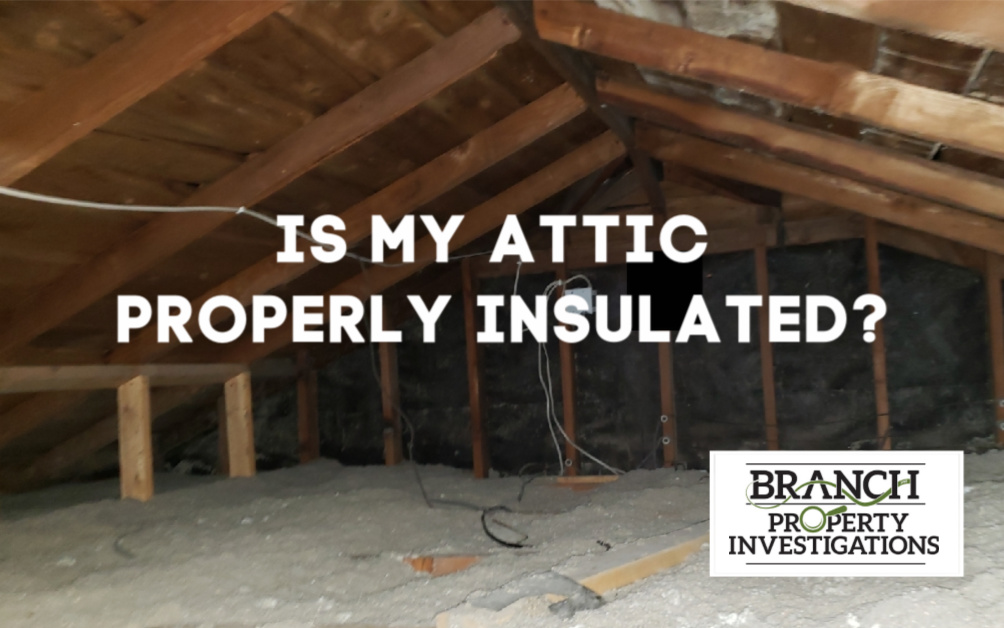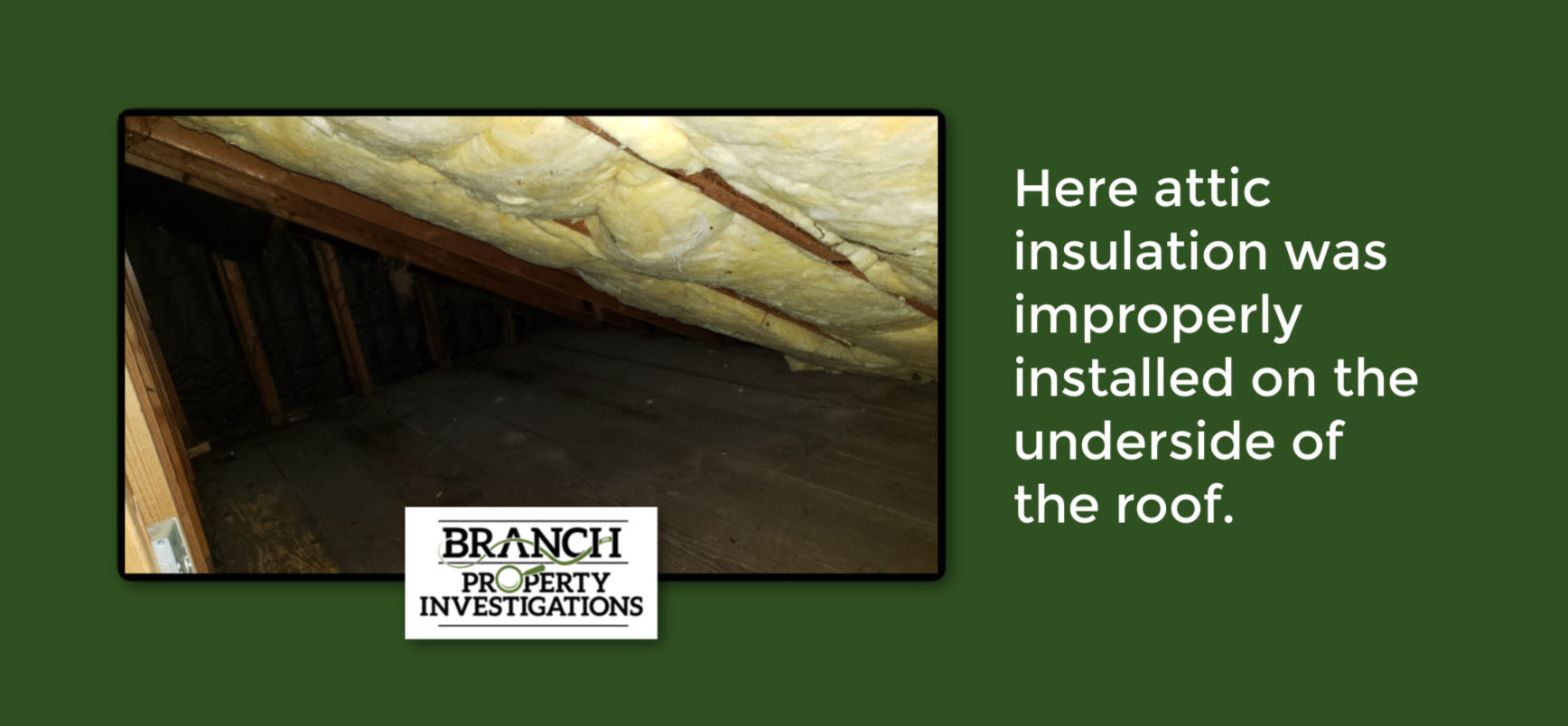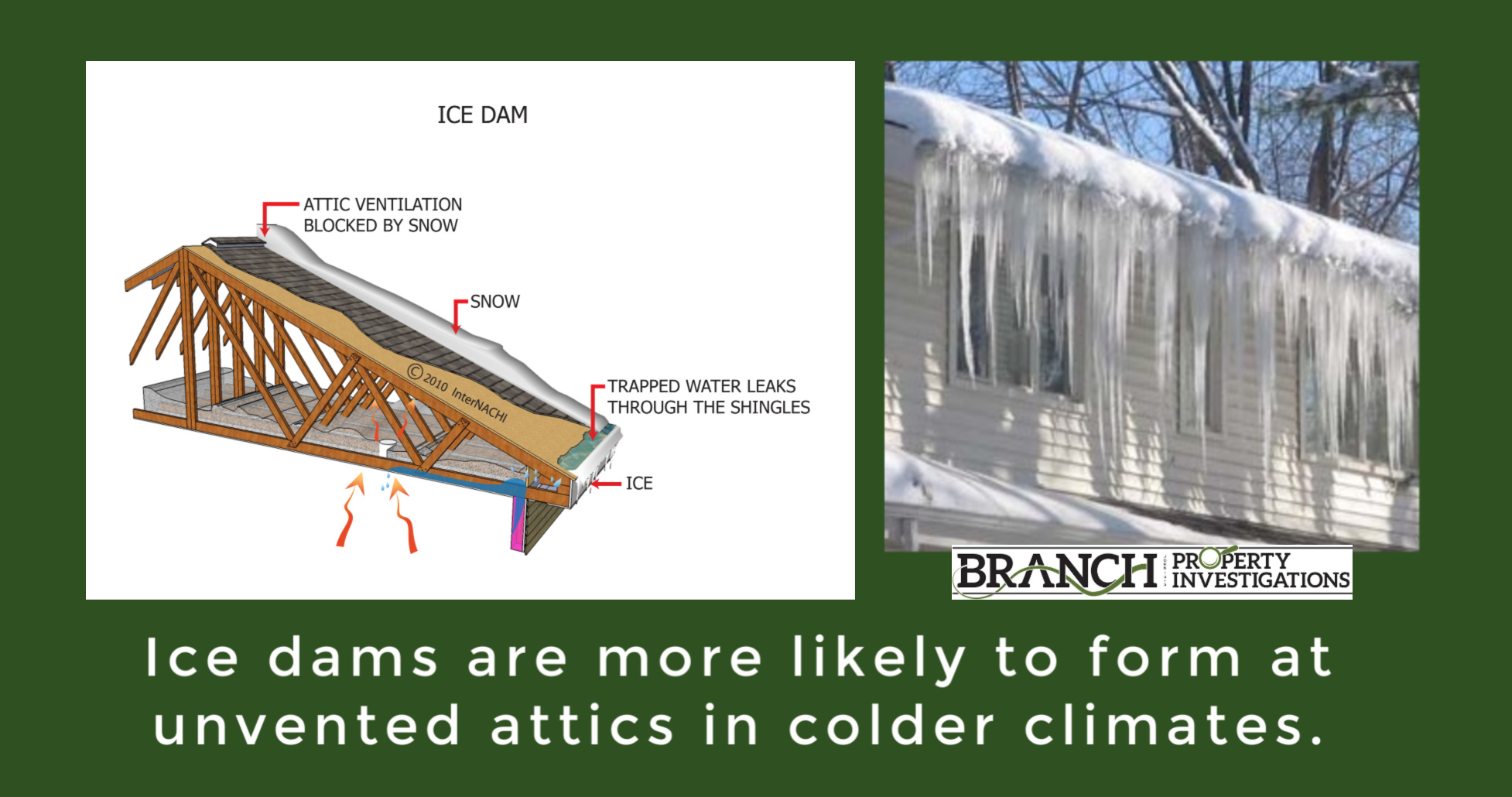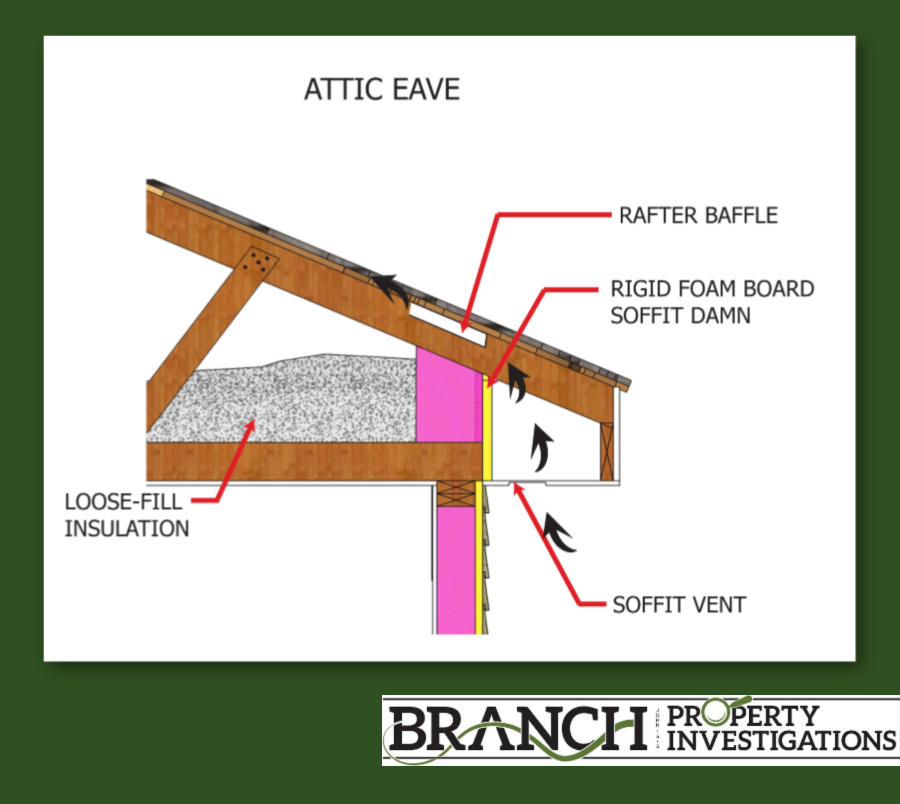I inspect a great deal of older Twin Cities’ homes built between 1920-1960 that are insulated improperly. Many of them have added attic insulation in the wrong places, so I want to help clients understand the impact.
What’s the big deal about attic insulation?
Attics by design are to remain unheated. Insulation and vapor barriers are needed to limit heat and moisture from entering the attic. However, insulation, except where specifically engineered and properly installed with a required air gap, should never be on the underside of the roof. Unfortunately, I often see insulation directly applied to the roof in older, story-and-a-half homes.
Vents are needed in attics to promote air flow.
A well-ventilated attic allows for proper airflow. Soffit or gable vents allow air into the attic and ridge vents or roof vents exhaust air from the attic. If properly done, there is a balanced system with 50% intake air and 50% exhaust air. If any of those vents become blocked, then there isn’t sufficient air flow to keep the attic at the proper temperature. Also, with the vents impeded, the moisture that enters the attic doesn’t have air flow to carry it out. This can lead to condensation and potential microbial growth.
Covering up the soffit vents with loose fill or batts, which can happen if you stuff insulation along the eaves, is a huge no-no. The airflow from the soffit/gable vents to the ridge/roof vent is needed to keep the roof cool. It will also help prevent ice dams.
Insulation applied to the roof’s underside inherently will block air flow out of the attic. It will also trap moisture between the insulation and the underside of the roof sheathing. This trapped moisture can lead to microbial growth on the roof sheathing. The insulation will also change the thermal characteristics of the attic to keep it at a different temperature than the outside air. It may even void the roof shingle manufacturer’s warranty.
What does proper attic-insulation look like?
Since the attic is such a critical part of your home’s outer “energy envelope”, insulation should be installed on the attic floor or between the framing for the ceiling of the floor below. For a story and a half home, it should also be applied to the side attic walls. A vapor barrier is also needed on the heated side of the floor/wall.
Blown insulation can be an excellent choice for attics if the area is to remain unfinished. It can often be pumped into place by a specialized truck in a matter of hours. If the attic is to be finished, consult an insulation/ventilation specialist to look at spray foam options.
Now what?
Proper attic insulation is the best way to prevent heat loss in the winter and retain cool air in the summer. So it’s time to pay close attention to what’s happening up there.
If you feel like your house is leaking money via a drafty or unsealed attic, we can help by taking a look. I can tell very quickly if your insulation was installed incorrectly. I can also use a thermal camera to find cool spots and holes. Sometimes it’s possible to fill those holes depending on the age of your insulation. You might be better off replacing your attic insulation outright instead of filling in the gaps.
Whatever the case, a professional can help you determine the best course of action to help your home’s energy efficiency.






